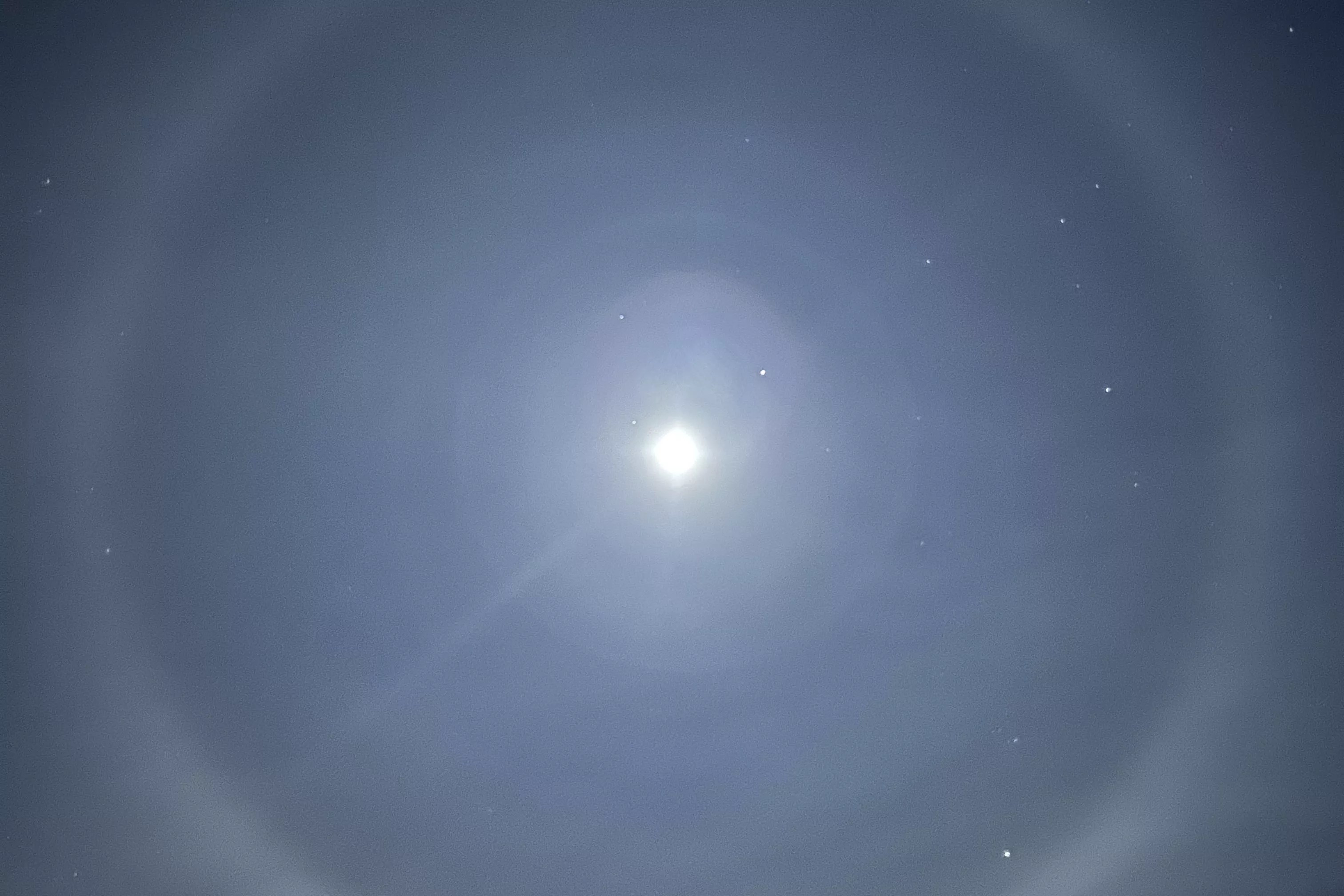
Abigail Bliss

Audio By Carbonatix
Experts say that rings around the moon can pop up from time to time, but have you ever seen one in Denver? On Sunday night, between 9:15 and 9:35 p.m., a lunar halo appeared above the metro area.
According to the National Weather Service, this optical effect occurs when “moon light refracts off ice crystals present in a thin veil of cirrus clouds. The halo is usually seen as a bright, white ring although sometimes it can have color.”
To take you back to high school physics class, refraction occurs when a wave of light changes direction due to altered speed.
“This is most commonly observed when a wave passes from one medium to another at any angle other than 90 degrees or 0 degrees,” the NWS adds.
You may have witnessed refraction when playing with a prism, which separates visible light into the colors of the rainbow. Frozen water droplets within cirrus clouds bend light in the same way. However, according to Space.com, individual colors are generally muted or invisible to the naked eye due to the moon’s dimness.
Space.com further explains that these ice crystals are generally uniform in size and hexagonal shape, which forms “an angle of minimum deviation…of 21.84 degrees.”
Rounding up, scientists often refer to this phenomenon as a 22-degree halo.
You could use a mathematical formula involving more letters than numbers to determine that – or trust the Farmers’ Almanac method: Stick your arm out towards a lunar halo and notice that the diameter of the ring spans a little less than the shaka sign, my dude.
When Will Denver See Another Lunar Halo?
The Farmers’ Almanac states that moon halos can occur year-round but are particularly common during colder months when more ice crystals appear at high altitudes. This past November, Denver & Front Range Weather reposted a Facebook photo depicting a lunar halo, and a Reddit user shared an image of the phenomenon on r/Denver around this time last year.
According to Space.com, a full or nearly full moon is ideal for lunar halos. Sunday’s waxing gibbous met that mark, with 91.7 percent of the moon in view. (The Farmers’ Almanac shares a detailed moon phase calendar for Denver, specifically.)
Finally, for a lunar halo to occur, cirrus clouds must be present. “Cirrus clouds are transparent and cover wide areas of the sky  -  up to thousands of miles ,” Space.com explains. “These clouds can be so thin and finely dispersed that sometimes lunar and solar halos are the only way of knowing they are actually present in the sky.”
Despite their potential invisibility, the Farmers’ Almanac notes that “Legends say that a moon halo is a warning that bad weather is coming soon. Although it may not be true every time, meteorologists have documented that high cirrus clouds that help form moon halos often come before storm systems.”
There must be some truth in the folklore, as the National Weather Service has announced a winter weather advisory in the Denver area from February 11 through February 12. It’s predicted a 100 percent chance of snow Tuesday night, with a possible accumulation of two to four inches.